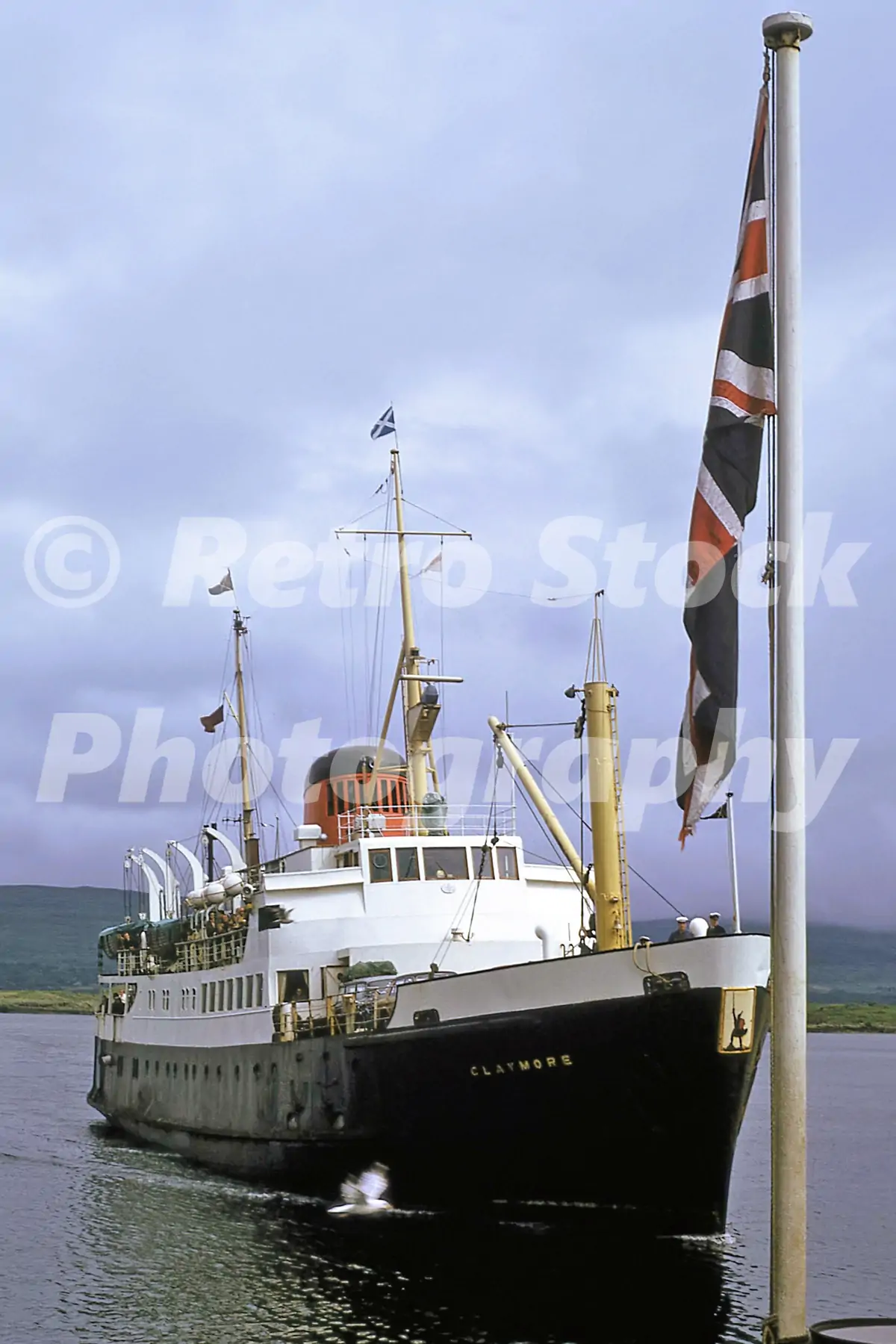Launched in 1955, the MV Claymore was one of the last traditional mail boats commissioned by David MacBrayne Ltd, marking the end of an era before the rise of modern car ferries. Built by William Denny and Brothers in Dumbarton, this vessel carried forward the name Claymore, recalling an earlier ship that connected Glasgow with Stornoway.
The MV Claymore measured 185 feet in length, had a gross tonnage of 1,024, and was powered by twin Sulzer diesel engines delivering a combined 1,299 brake horsepower, enabling speeds up to 12 knots. Designed to serve both passengers and cargo, she accommodated 494 passengers, including sleeping berths for 56, and could carry up to 11 motor vehicles and 26 head of cattle. This versatility made her well-suited for the rugged routes she served.
For nearly two decades, the Claymore operated on the Inner Isles Mail route, linking Oban with several remote islands including Tobermory, Coll, Tiree, Castlebay (Barra), and Lochboisdale (South Uist). Her service was vital for these communities, delivering mail, passengers, and essential goods across Scotland’s challenging western seascape. She remained in operation until 1972, when newer vessels better equipped for car transport gradually replaced her.
After retirement from Scottish waters, the MV Claymore found a second life in Greece. Sold in 1976 to Canopus Shipping of Piraeus, she was renamed City of Andros, and later City of Hydra after a rebuild that included lengthening and the addition of a swimming pool. Based at Flisvos Marina, she offered day cruises to the Saronic Islands, delighting tourists with scenic voyages to Hydra, Aegina, and Poros until her withdrawal in 1993.
Her final years were spent laid up in Eleusis, Greece. Sadly, in November 2000, the MV Claymore sank at her moorings and was subsequently scrapped. Despite this, her legacy endures as a symbol of the era when dedicated mail boats were lifelines for Scotland’s island communities.






Reviews
There are no reviews yet.